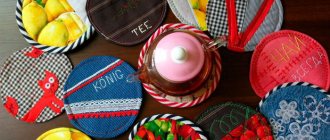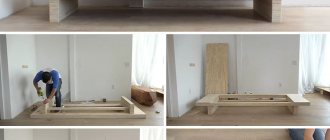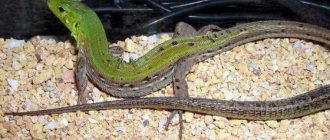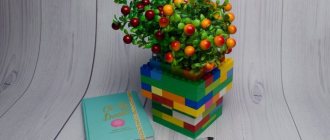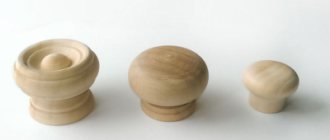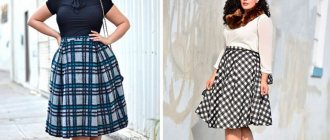Recommendations
When embroidering on jeans, it is necessary not only to proceed from considerations of beauty and style, but also from ease of placement and care. It is important that satin stitch embroidery on jeans is placed in a location where it is easy to care for and has minimal impact. Also, when starting to create decor, it is necessary not to deviate from the presented scheme, if we are talking about novice craftsmen.
Embroidery on jeans
You should do everything as carefully as possible, especially when creating a design with the addition of sequins and beads. It is necessary to use a double seam so that the accidentally created product does not tear. Before starting any work, you should decide on your sewing technique and remove everything unnecessary. Use only proven technologies; it is advisable to buy a ready-made kit for embroidery on jeans.
Embroidering on denim: tricks and tips
Embroidery on jeans will help make your item unique and give it some flair. Embroidery can be bright and noticeable or delicate and minimalistic - the tips below will help you complete different options.
How to hem jeans and make scuffs: master class
Step 1: Prepare your jeans before work and come up with a sketch
Wash and dry your denim before use. Then iron the area where you will embroider. Come up with and draw a sketch.
Floral mood: masking scuffs on jeans
Step 2: Transferring the design to denim
*If your jeans are light enough, you can transfer the design as you would with regular embroidery, such as a fabric marker, including water-soluble or disappearing markers if you plan to do the embroidery quickly. Just in case, check how well the marker disappears by testing it on an inconspicuous area.
*If the fabric is a deep color, the marker line may not be visible. Then you can try using fabric transfer paper: put it on the denim and trace it with something sharp. However, such a contour, as is known, is not very durable; it can be erased or smeared. It can be used to apply small images that will be embroidered quickly.
*Another way is to use tracing paper, as in this example. The method is suitable for drawings or inscriptions with an outline.
*The method shown in the photo above is using a water-soluble stabilizer for embroidery. You can take such a stabilizer in the form of a transparent film, if the color of your fabric allows, or, as in the photo, a denser loose stabilizer, similar in appearance to non-woven fabric. The first dissolves faster, the second a little longer, but both can be removed after embroidery by washing or rinsing. After embroidery, before removing the stabilizer, if it is non-adhesive, it is better to trim off its free sections (be careful not to damage the embroidery). This will make it easier to wash off the stabilizer without leaving any traces.
* If you are doing cross stitch, use an overlay canvas, the threads of which can then be removed by pulling them out (to make the canvas threads easier to remove, you can moisten the embroidery with water with the addition of fabric conditioner).
Idea: cuffs for jeans from an old T-shirt
Step 3: Choosing a needle and thread
* Denim is a dense material, so you will need a needle that is not too small, but strong and sharp.
* Threads can be anything - from thin sewing threads and traditional floss to iris threads or others, including non-cotton threads, depending on your idea. If you chose thick threads, conduct a test on an inconspicuous area: how well the thread passes through the denim, how well it lays down. Then the threads can be removed. If the thread does not glide very well, a special wax or thread conditioner can help. In the absence of special means, you can try moistening the thread with fabric softener or rubbing it with a piece of soap.
* Another point that is especially important for unfamiliar threads is that before work you need to make sure that they do not fade (and will not later spoil your item with stains). Soak a piece of thread for half an hour in warm (30-40 degrees) water, and then squeeze it through a white cloth. If there are no streaks, the threads should not fade.
How to decorate clothes with denim pockets
Step 4: Let's start embroidering
Depending on the placement of your embroidery, you will be able to use a hoop or not. Either way, denim is usually tight enough that you don't have to worry about accidentally pulling the fabric together. If you are embroidering, for example, on a jeans pocket, then it will be more convenient to make stitches in two punctures, in one movement bringing the needle to the wrong side and then to the face, as shown in the picture. To avoid injuring your fingers, you can use a thimble. When embroidering, it is better not to make the stitches too long, so that later, when using and washing the item, they do not get caught on something and stretch out. And, of course, it is worth fastening the thread well.
Photo: blog.megannielsen.com, Sew Daily, thesprucecrafts.com
How to make scuff marks on jeans with your own hands
Decorating a denim jacket with embroidery: a master class and 33 ideas for inspiration
Making fashionable denim shorts out of ordinary ones: 8 master classes
Varieties of decor
You can decorate jeans using different materials. For example, you can make jewelry using beads, sparkles, satin ribbons and textiles. At the same time, you can decorate the surface of denim products using different techniques: cross stitch, satin stitch, stones and others.
Embroidery on jeans using beads
Cross-stitch
Cross stitch on jeans is extremely popular today. When watching any show, especially a Dolce Gabbana fashion show, you can see how many beautiful embroidered items there are. Before decorating old or new jeans, you need to make a step-by-step plan for decorating the products to your taste. Skilled needlewomen and just beginning craftsmen recommend doing such an element as embroidery on jeans with your own hands, using satin stitch, but you can also make a beautiful design with a cross stitch.
At the same time, you can make various mountains on clothes with feathers, dandelions, geometric patterns, Mickey Mouse, flowers, butterflies, abstract patterns, geometric patterns, hearts, stars, berries, animals and cartoon characters. After forming a beautiful design, you can complement the embroidery on jeans of various classes with fittings, sparkles and other elements.
Decorating with a cross
Satin embroidery
Paisley embroidery on jeans involves creating even stitches that are directly adjacent to each other. Using this technique, you can make a pattern on different fabrics, but a dense, smooth material is best suited. It is necessary to make a note that when washing, if floss was used to embroider the denim with your own hands, damage to the material may occur. To prevent this from happening, you need to immerse the floss in boiling water before work. Then the threads will not fade. Another option is embroidery using light threads.
You might be interested in Several patterns and embroidery patterns in the Rococo style
You can complement the embroidery with satin stitch when using lace. It's always tender. Lace items always speak of delicate taste, since lace can be narrow or wide, white, black or flesh-colored.
Satin embroidery
Sequin embroidery
Do-it-yourself embroidery on shorts using multi-colored, gold and silver sequins is another interesting type of decor for decorating jeans. Here it is possible to decorate using additional fabric, for example, a thin layer of canvas, high-quality felt or 100 percent cotton. Only then glue or sew on the decorative element as an applique. You can do this not only with your favorite and new jeans, but also with a fashionable denim jacket. It is also possible to make a geometric applique on the denim sides with pockets or near the pockets. As for the outline, it is not necessary to outline it.
Sequin decoration
Beadwork
For any floss embroidery on jeans and decoration, you can take any beads that can most often be found on store shelves. It comes in plastic, round, cylindrical, square, cubic and triangular. There are also beads called bugles, charlotte, delica, pony, barry, drops, twin. You can embroider using different techniques.
The most famous techniques are the line stitch, stem stitch, arched stitch, snap stitch and monastery stitch. In this case, the stitches can be made both horizontal and vertical. You can make bead embroidery on jeans according to any pattern. It is not necessary to take a ready-made set; you can simply study the information on what can be embroidered on jeans.
Decoration with beads
Machine embroidery
Do-it-yourself machine embroidery products on a denim jacket are especially in demand today. They look perfect on jeans and jackets. Many brands use it to make things beautiful. There is no need to think that such decor is only for women. It can be masculine. The main thing is to make the drawing more brutal. You can make jewelry for a white jacket, black biker jacket, long denim jacket, green parka and khaki bomber jacket.
Note! The most suitable place for such decor is the back. This is where you can use a variety of button locks and seams. The back can be complemented with various accessories, chains and beaded threads.
You might be interested in this Master class on embroidering roses using ribbons
Machine embroidery on a denim jacket
Application methods
Before you start work, you need to carefully consider what the embroidery should be like. For those who are already familiar with embroidery techniques, satin stitch or cross stitch will suit you. For beginners, a suitable option would be embroidery with rhinestones, decoration with beads, and sequins. You can find many videos that will tell you in detail how to embroider a design on jeans.
To make the drawing look harmonious, follow the main rules:
- carefully consider the motif that should be on the trousers;
- apply the stencil to the selected location using chalk or a pencil;
- choose the appropriate technique and embroider the selected pattern;
- If the design was embroidered with satin stitch or cross stitch, it is better to finish it by ironing it with an iron at medium temperature.
Gladue
Anyone can master DIY satin stitch embroidery on jeans. To start, choose just a few colors and a simpler design, such as a feather. All that remains is to find embroidery patterns on jeans.
How to embroider a feather with your own hands to decorate jeans:
- the sketch is applied to the place where the embroidery will be;
- You need to embroider in the direction from the center of the feather to the edges, using straight stitches;
- first, the design is embroidered with one color of thread in two folds, then with another, filling the empty space;
- the feather is embroidered with a thread of a different color, in three folds.
Once you are able to embroider a simple pattern using satin stitch, you can gradually move on to more complex ones. Satin stitch embroidery in the form of flowers on jeans looks beautiful.
Beads
Beads and seed beads will help add an interesting design to your jeans. Beads can be either sewn or glued on using a hot iron. A pattern made from sewn beads is considered more reliable.
Pockets are often decorated with beads, sewn on in a chaotic manner. You can lay out a pattern or letters from beads, even an entire inscription. Beading on jeans can transform simple trousers into a glamorous item that you can wear to a restaurant or on a date.
Rhinestones
For denim, rhinestones are suitable, which are attached to the fabric using hot fixation. Prepare tweezers, iron and ironing board. How does the process of decorating with rhinestones take place:
- lay the item on the ironing board with the part on which the rhinestone decoration will be;
- Use tweezers to carefully pick up the rhinestones and arrange them in the required order;
- apply the iron to the rhinestones, setting the steam function. The rhinestones should be fixed to the fabric;
- If rhinestones of different sizes are used, small rhinestones are glued first, and only then larger rhinestones.
The decor on the hips and pockets looks stylish. Don't be afraid to wash jeans with rhinestones in the washing machine. If you did everything correctly, the rhinestones will remain in place after washing. You can sew on rhinestones with a thin needle and thread. Of course, it will be more painstaking work, but the result will exceed all expectations.
Application
There are situations when a hole, a large stain, or abrasion appears on jeans that cannot be hidden. In these cases, an application will help. You can sew one applique, or you can come up with a whole plot, without forgetting about symmetry. You can decorate children's jeans with applique. A character from your favorite cartoon will look harmonious on them.
The applique will be decorated with a decorative stitch or line. You can sew on beads or rhinestones. Ready-made appliqués are sold in specialized stores, or you can make them yourself using pieces of fabric. Store-bought patches are already equipped with an adhesive backing for a secure hold on denim. Some insure themselves and secure the patch around the entire perimeter with decorative stitching.
For women's trousers, appliqués made of suede, drape, leather or velvet are ideal. It is better to decorate summer models with appliqués made of chintz, linen, calico, and natural silk.
Schemes and drawings
Patterns for satin stitch embroidery can be found on the Internet. They are also freely available to many needlewomen, along with a description of the techniques used to form the pattern. It can be placed on the sides, back and front. You can see the most successful placement options and designs at fashion shows or in magazines. The main thing is to do this not in the folds, where they are most vulnerable to abrasion during wear or washing.
Scheme
Materials for work
When creating a pattern on jeans or a jacket, you can choose any available materials. For decoration, you can take any accessories. For example, you can decorate products with sewn-on buttons, rings, clasps, hoops, chains, flowers, pendants, thermal jewelry, twisted, metalized and waxed laces, clips, pendants, headbands, keychains, pearls, Swarovski beads, cabochons, buttons, brads, feathers , leaves and voluminous decorations. You can also use craquelure, wooden blanks, glitter and sparkles to decorate finished products.
Tips for choosing materials
There are different types of threads. Cotton ones are the most common. The standard option is 8 meters. The composition is 100% cotton. There are also wool and acrylic varieties. The former are used to form tapestry products, and the latter to decorate pillows and rugs.
There are also linen, metallized and melange threads. Linen floss is thin, silky and durable threads made with permanent dyes. Metallized floss is available with gold, pearl, mother-of-pearl and silver patinas. Look good for creating satin stitch embroidery. Melange floss is a gradient type of thread, in which one tone smoothly transitions into another. This is achieved by dyeing the thread using a specific color of varying intensity.
There are also luminous, satin viscose and multicolor threads - threads that have mixed shades.
Floss
Registration through services
- All articles
- Handmade
- Denim - do-it-yourself alteration of denim clothes
Inspired by the article about patches, I was looking for interesting ways to decorate old jeans (and I had a huge amount of them), and came across master classes from the Spanish youth brand Desigual.
This is where the flight of fancy can be seen! On their official website there is a collection of Exotic Jeans, in which each pair of jeans is decorated by hand. This collection was inspired by the markets of India, where the senses explode with a mixture of spices, colors and textures. “Turmeric, coriander and cardamom breathe in every stitch...(c) Desigual
1. So, to create these jeans you will need:
- thread and needle (or sewing machine);
- scraps of lace and fabric with a houndstooth pattern;
- sandpaper or fine grater.
We take regular classic jeans without any decoration.
Using a grater or sandpaper, make abrasions on the legs in the places where you want to create a ragged effect. You should rub vertically (with the jeans straight), in short jerks, pressing the grater tightly against the jeans. Thus, the top layer of denim will tear, and the threads of the bottom layer will fluff up enough.
Then glue the pieces of lace and black and white fabric into a houndstooth pattern using textile glue. For greater strength, you can also sew these patches to the jeans, leaving 1 cm from the edges.
You can also add a hem from a second pair of jeans by stitching it along the bottom - this way you get the effect of a fashionable double hem.
2. To create these jeans you will need:
- thread and needle (or sewing machine);
- decorative braid or ribbon (sold on Amazon);
— decorative stripes (can also be purchased on Amazon);
As in the first case, we take ordinary jeans without any decoration (this pair had small abrasions).
We attach a decorative braid or ribbon of your choice to the belt at the waist (here are several types of braid in the oriental style).
Then use textile glue to glue the decorative stripes to the jeans. Using gold thread, make stitches on the legs in the style of Japanese sashiko embroidery (even stitches with the needle forward).
3. Well, the third alteration is a denim jacket. You will need:
- thread and needle (or sewing machine);
- decorative braid or ribbon;
- fabric marker;
- sleeves from other clothes.
We take a classic denim jacket without any decoration. Cut off the sleeves of the jacket, leaving 2 cm on each edge. Unravel the threads using tweezers and a pin to create a fringe, as in the photo. You will get a vest.
Using textile glue, glue pieces of different decorative braid onto the vest. You can make a drawing or embroidery on the back of the vest. Replace buttons with decorative buttons.
Finally, take the sleeves from an old sweater, sweatshirt, cardigan, etc. and sew them to the vest by hand or using a sewing machine.
In general, on the official website of Desigual you can see a lot of interesting things, decorated in the same way as described above. These are vests, jeans, jackets and even bags and shoes. So I recommend that needlewomen who have suitable material (denim) take a look there.
Placement of embroidery and combination with other parts of the set
You can place an element such as embroidery on a denim jacket anywhere, combining it with other parts of the set. It will be beneficial to place it on the back if we are talking about a denim jacket, as well as near the pockets if we are talking about decorating denim trousers.
On denim pants
For an advantageous placement of decoration on denim trousers, you need to think about how the design is not subject to deformation and does not spoil the appearance of the entire product as it wears out. In accordance with this, embroidery should be done in a place where there are no bends. For example, it should not be placed on the knees or thighs. Also, do not embroider on the back and front pockets. The best places for decoration can be found on the Internet. So, it looks great on the bottom of pockets, on the side, near the hips. The pattern along the entire length of the jeans and small inserts of patterns look interesting.
You might be interested in Creating an embroidery machine with your own hands
Good arrangement of decor
On a denim jacket
As for the jacket, the most advantageous place for such an element as cross stitch on jeans is the back. The pattern on the chest and ends of the jacket looks no less interesting. Fashion catalogs from designers suggest decoration in the place where the lock is located and where the sleeves end. Stores across the country also offer jackets with embroidery on the sides of the sleeves, on the hood and near the front pockets.
Recommendations for embroidery with rhinestones and satin stitch
Taking into account the density of the fabric, good quality sharp needles and reliable hoops are selected. Threads are selected according to the taste of the owner of the trousers:
The shades of the threads should match the clothes that will be worn with pants. Before decorating new jeans with embroidery, they must first be washed to check for shrinkage and fading. To do this, they are soaked for half an hour in warm water with a solution of powder for colored fabrics. We observe the acquired color of the water. Taking into account the above description, the color spectrum of threads necessary for the work is selected. Next, the jeans can be sun dried and ironed.
Pants decorated with embroidery look amazing.
Transferring a design to denim
You can transfer the design to the surface of the jeans using carbon paper and tracing paper, the dusting method, solvent, laser printer and thermal transfer paper. You can also transfer the drawing using a washable marker. The drawn lines may disappear after some time. You can also use non-woven fabric for these purposes. All you need to do is apply a sketch to white non-woven fabric, which will then be cut out and attached to the jeans with a hole using an iron.
Transferring a design to denim
Different methods of embroidery on jeans
You can decorate jeans with embroidery using a variety of techniques: satin stitch, cross stitch, beads, rhinestones, stones, ribbons. How you prefer to decorate your jeans is your choice. Having studied in detail different embroidery techniques to apply decor to jeans and choosing what you want, you will undoubtedly be satisfied with both yourself and the embroidery.
Bead embroidery of denim trousers or shorts
It’s enough to simply embroider denim trousers with beads yourself. Such clothes will look original and stylish, and they look like unique designer clothes. Taking into account the rough density of the denim fabric, thick needles and large beads are used. The work begins with drawing the required ornament on the marked place of the application. Next, the drawn image is embroidered with a needle and beads.
- flowers
- leaves
- geometric patterns
- zigzag lines
An example of how to embroider trousers with beads.
Unusual, colorful designs give plain jeans a certain attractive, charming charm.
Applying rhinestone decor to denim
When decorating your jeans with rhinestones yourself, it is important to remember that there should not be too many pebbles. A large number of rhinestones can look vulgar. We also pay attention to the placement of the selected embroidery.
Taking into account the above recommendations, we attach rhinestones in areas of the trousers that are not subject to bending or rubbing, in order to prevent them from falling off.
Before you start embroidering with rhinestones, jeans are washed, dried, ironed and laid out on a work surface.
To complete the work you can use the following materials:
- selected pattern, print or template
- rhinestones for decoration
- special glue
- tweezers to make working with stones easier
Let's get started:
- On the laid out trousers, a special soluble marker is used to depict the selected ornament from the prepared diagram.
- Next, rhinestones are placed on the finished image using diamond tweezers. The process of diamond embroidery is labor-intensive, requiring attention and perseverance.
- When the diamond embroidery is finished, the design is steamed using an electric iron. This procedure will help to fix the diamonds well and reliably. Jeans decorated with diamonds are beautiful and trendy and are a pleasure to wear.
Embroidered denim shorts in video tutorial
We study embroidery with rivets, create unique things
No less popular decoration among fashionistas are rivets. You need to choose a material that will fit well into dense fabric.
Rivets in decorating jeans.
Typically, rivets are placed along the seams, on pockets and on waistbands. Various ornaments and inscriptions are laid out from the described material. To begin an interesting transformation of your favorite clothes, the trousers are laid out on the table, and a drawing from the diagram is applied to the selected areas.
Rivets are placed along the outline of the ornament, holes are pierced and the petals are bent. Next, the details are fixed. Having worked a little on the product, the expected result will delight you with extraordinary beauty.
Japanese embroidery "Sashiko" decor of jeans
Refined and original Japanese embroidery perfectly decorates all kinds of clothing. This option looks extraordinary on women's trousers. This decoration of jeans is popular among young people.
Tip: Apply a Japanese embroidery print.
- To work on such a product, threads of pastel, discreet colors are used.
- The principle of the Sashiko method is to depict geometric shapes that are constantly changing in some chaos. A simple, not overloaded print gives the wearers of jeans a romantic and natural girlish beauty.
Decorating trousers with such embroidery begins, as always, with washing, drying and ironing. Next, the product is laid out on a flat surface, a design is applied, and the embroidery procedure takes place. By listening to the advice of famous needlewomen, you will receive an amazingly beautiful ornament, embroidered with your own hands.
Decorating jeans with various methods and techniques of all kinds of embroidery is pleasant and joyful. By decorating things yourself, you can be sure that your model of denim trousers is the only one in the whole world and always looks attractive and advantageous. By combining embroidered jeans with blouses, blouses, and T-shirts, you will always be irresistible to others.
Gentle care
Only careful care can ensure the durability of embroidery on denim. Here are some helpful care tips:
- Before washing, you need to fasten the zipper and turn the jeans inside out;
- For washing, do not use products that contain bleaches;
- Denim should be washed at a temperature of no more than 30 degrees;
- It is best to wash denim trousers and jacket by hand;
- The embroidery itself should be washed straightened, placing the embroidery moistened with water face up.
In addition, when washing, it is recommended to avoid using various conditioners. It is better to rinse jeans with cool water. Denim items should not be twisted or wrung out. You just need to hang it and let the liquid drain. Drying the fabric should be done in a warm, but not sunny place, in a straightened form. You can do ironing, but you shouldn’t, especially in places where the decorative part is done. It is best to iron using a steamer. In this situation, she will be able to maintain the convexity with volume.
Gentle care for denim
In general, there are different types of embroidery on jeans and patterns for the most successful placement of the pattern on the surface of the product. The main thing is to follow the provided instructions from users and place the patterns the way they will look best.



